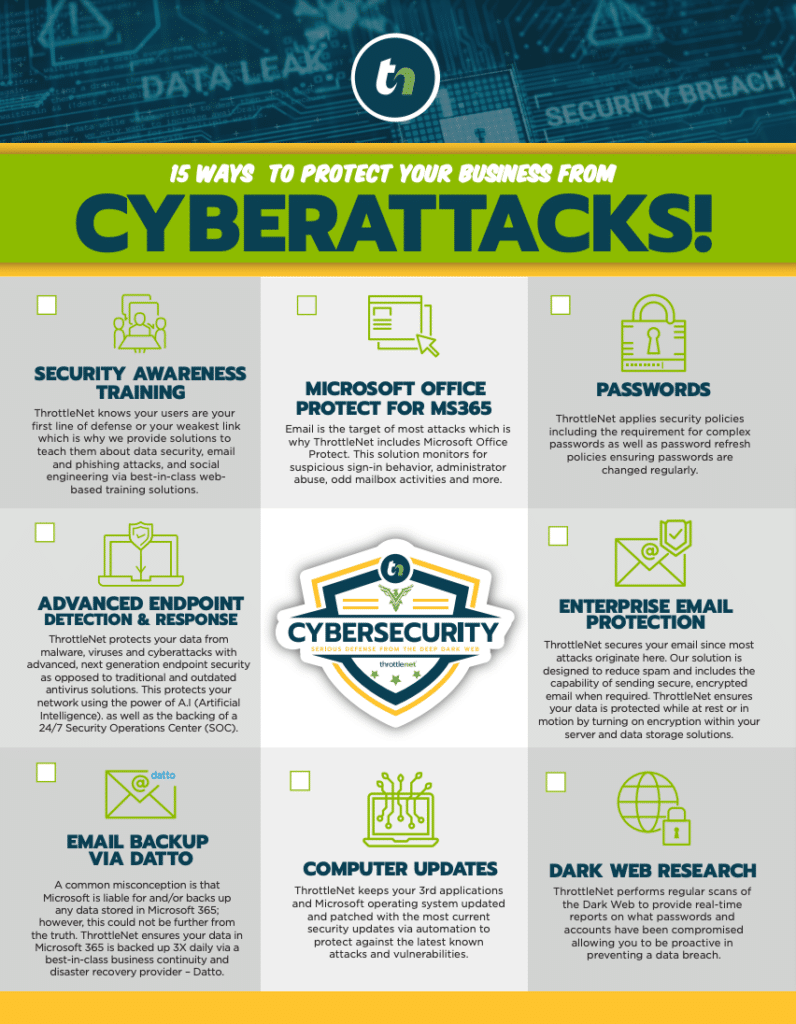It is somewhat surprising to me that so many are still working remotely; however, this is quickly changing. Many employers in 2025 are requiring their team members to be in the office at least a few days a week which can create issues for IT and cybersecurity.
With this shift back to an internal team – at least a few days a week – it is a good time to revisit your network infrastructure to ensure it can support users that may not have been in the office for a few years.

1. Assess Your IT Infrastructure
A hybrid model demands robust and adaptable IT support and cybersecurity systems. Start by evaluating your current infrastructure and identify areas that need upgrades or adjustments.
- Ensure Scalability: Verify that your network can support both in-office and remote employees, especially during peak usage times.
- Cloud Services: Leverage cloud-based tools to enable seamless collaboration and data access, regardless of location. These might include something as simple as OneDrive for file sharing and collaboration or something more complex such as an Azure hosting environment.
- Hardware Standardization: Provide employees with standardized and secure devices to minimize compatibility issues. Make sure these devices are running supported operating systems and that the most current updates and patches are applied.
2. Strengthen Endpoint Security
Hybrid work environments increase the number of endpoints accessing your network, amplifying cybersecurity risks.
- Implement Endpoint Protection: Use managed detection and response (MDR) solutions – which means they are backed by a fully staffed, 24/7 Security Operations Center (SOC) – to monitor and protect all devices.
- Enforce Device Compliance: Ensure all devices meet security standards before granting network access, including personal devices used for work.
- Regular Updates: Automate software updates and patch management to protect devices from vulnerabilities.
3. Secure Your Network
Network security becomes more complex with hybrid setups, as employees connect from multiple locations.
- VPN Alternatives: Consider zero trust network access (ZTNA) instead of traditional VPNs for more secure and scalable remote connections.
- Network Segmentation: Segment your network to limit access and reduce the potential impact of a breach.
- Wi-Fi Security: Educate employees on IT support and cybersecurity for their home networks and provide guidelines for safe internet use.
- DNS Filter: Employ a DNS filter to prevent users from accessing known-to-be malicious websites that could lead to a network compromise or cryptojacking of your machines.
4. Adopt Zero Trust Architecture
The Zero Trust model is essential in a hybrid workforce, where no user or device is trusted by default.
- Multi-Factor Authentication (MFA): Require MFA for all logins to ensure robust identity verification.
- Implement a Policy of Least Privilege: Limit access to systems and data based on job roles and responsibilities.
- Continuous Monitoring: Use real-time monitoring to detect and respond to suspicious activities quickly. This is typically done via persistent threat hunting tools that establish a base line behavior across the network so as to identify any anomalies that might be indicative of a threat actor.
5. Optimize Collaboration Tools
Hybrid work thrives on efficient communication and collaboration tools.
- Unified Platforms: Use platforms like Microsoft 365 for seamless document sharing, video conferencing, and project management.
- Access Control: Implement role-based access control (RBAC) to ensure only authorized users can access sensitive data or tools.
6. Enhance Cybersecurity Awareness via Training
With employees splitting their time between home and office, cybersecurity training is more critical than ever.
- Phishing Simulations: Regularly test employees with phishing simulations to increase awareness of email-based threats.
- Data Handling Best Practices: Train employees on securely managing sensitive data, both online and offline.
- Incident Reporting: Encourage prompt reporting of suspicious activities or potential breaches.
7. Implement Clear IT Policies
Establish clear policies that define acceptable use, security expectations, and protocols for both in-office and remote work.
- Hybrid Work Policy: Outline guidelines for device use, data access, and secure remote working.
- BYOD Policy: If allowing employees to use personal devices, specify security requirements and monitoring protocols. This might include a Mobile Device Management (MDM) policy outlining acceptable use of personal devices as well as the process and ramifications in the event a device is lost or stolen.
- Incident Response Plan: Ensure all employees know how to report and respond to cybersecurity incidents.
8. Monitor and Manage Access
Managing user access becomes more critical as employees shift between work locations.
- Identity and Access Management (IAM): Centralize user access control and automate provisioning and deprovisioning as roles change.
- Single Sign-On (SSO): Simplify authentication with SSO to reduce password-related vulnerabilities.
- Activate and Consistently Review Audit Access Logs: Regularly review access logs to detect unusual activity or policy violations.
9. Prepare for Physical Security Challenges
In-office environments also require enhanced physical security measures.
- Access Control Systems: Use key cards or biometric systems to control office access.
- Secure On-Premises Devices: Lock down office equipment, ensuring workstations are not left unattended without proper security measures.
- Shred Documents: Prevent sensitive information from being physically leaked by mandating document shredding and proper disposal protocols.
10. Regularly Test and Refine
Transitioning to a hybrid model is an ongoing process. Regular testing and evaluation will help you stay secure and efficient.
- Vulnerability Testing: Conduct regular vulnerability tests to identify security lapses in your hybrid setup.
- Employee Feedback: Gather feedback to identify areas where tools or policies may be causing friction.
- Continuous Improvement: Adapt your IT and security strategies as the hybrid workforce model evolves.
Moving from a fully remote workforce to a hybrid model requires thoughtful planning and execution, particularly in the realms of IT infrastructure and cybersecurity. By following these best practices, you can create a secure, flexible, and efficient hybrid work environment that supports both employee productivity and organizational resilience. Remember, the key to success lies in ongoing evaluation and adaptation as the needs of your workforce and technology landscape change.

Chris Montgomery
ThrottleNet Sales Director
cmontgomery@throttlenet.com



